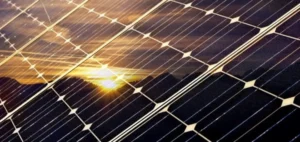In 2022, a new generation of Belgians, French and Italians will have lost their carefree attitude towards energy and will have learned to watch their radiators. In the old world, gas was abundant and cheap. Its reference price on the European market varied little, around 20 euros per megawatt-hour. This year, it rose to 300 before falling back to 100 euros…
Sofie de Rous is the first to admit it: before this year, it was a bit like Versailles at home, a small house in
the Belgian coast, often heated to 21°C: “I admit, I like a warm house”. But like millions of Europeans, this 41-year-old communicator in an architecture agency saw her bill skyrocket from the spring, after the invasion of Ukraine by Russia, with the gradual closure of Russian gas pipelines to Europe.
Indeed, gas prices have surged, shaking up world markets, with a very real and expensive consequence: Europe and Asia are bidding against each other to snatch up cargoes of liquefied natural gas (LNG) produced in the United States, Qatar or elsewhere.
And while countries like Spain and France have frozen rates for consumers, others like Belgium have more or less let suppliers pass on the increase to their customers.
“I panicked a bit,” says Sofie, owner of her poorly insulated 90-square-meter house in Oostduinkerke, heated by a gas boiler. She was paying 120 euros per month before the war for gas and electricity: her bill has increased to 330 euros.
On reflection, she does not regret this “realization”. Today she watches her consumption, heats at 18°C, and asks for information about installing solar panels and double glazing… Like Sofie, a new generation of Belgians, French or Italians has lost its energy carefree attitude in 2022 and learned to watch its radiators.
In the old world, gas was abundant and cheap. Its reference price on the European market varied little, around 20 euros per megawatt-hour. This year, it rose to 300 before falling back to 100 euros…
“I’ve never known such a chaotic period,” Graham Freedman, an analyst at Wood Mackenzie, which has been monitoring the natural gas market for 40 years, told AFP.
Extreme” reductions:
Because of the crazy prices, factories, especially in the German chemical industry, which had been fuelled by eastern gas since the Soviet era, were shut down. However, European reserves were filled to the brim last summer with the last cubic meters of Russian gas, and no one was cut off.
“Until February, the very idea that Europe could get by without Russian energy seemed impossible,” recalls Simone Tagliapietra, of the Bruegel think-tank in Brussels. “The impossible has become possible”.
Europeans were lucky: the mild autumn weather delayed the lighting of the boilers. In any case, the decline in household and business consumption is exceptional: around 25% in October compared to 2019-2021 in
the European Union, calculates Bruegel.
Half of all Germans have gas boilers, and their decrease in consumption is “extreme, enormous”, confirms Lion Hirth, professor of energy policy at the Hertie School in Berlin. He sees it as a desire “not to pay Putin”, as much as to reduce the bills.
In a few months, Russia has thus lost its first gas customer, Europe, whose purchases have fallen from 191 billion cubic meters in 2019 to 90 billion this year, and probably 38 next year, predicts Wood Mackenzie. It was necessary to compensate with LNG, which the EU used to ignore because it was more expensive.
With a perverse effect: “Europe began to pay more for gas than Asia, and countries like India and Pakistan could not compete,” says Graham Freedman. The climate consequence: without LNG, these less wealthy countries are burning more coal.
And 2023?
To unload LNG from LNG tankers, port terminals are needed that can regasify it and reinject it into the onshore networks. Germany had none, France and Spain several.
This gives a new role to the gas pipelines in the north-east of France, which were traditionally used to import gas from the east, and now send the gas imported via Fos-sur-Mer or Saint-Nazaire eastwards, and for the first time towards Germany.
“We send much more gas to Switzerland,” which then sends it back to Italy and Germany, Guillaume Tuffigo, from GRTgaz, which manages the French gas pipelines, explained to AFP while showing AFP around a compression station in eastern France, lost in the Vosges countryside, one of the essential links in this new European solidarity. For the next winter, and the following ones, there will be no more Russian gas to fill the reserves. The colder the winter, the more LNG will have to be bought from spring onwards… and the more “the fight” between Europe and Asia will intensify, Laura Page, a gas specialist at Kpler, told AFP.
“There is not enough gas in the world to replace Russian gas,” agrees Graham Freedman.
It is only around 2025 or 2026 that new LNG projects will produce millions of additional tons. By then, will Europeans have learned to live at 18°C?






















